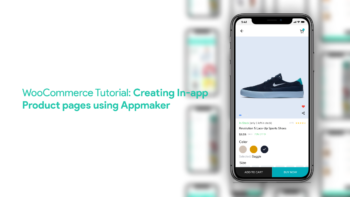When it comes to inventions and technological advances the default language that people use is English. But in terms of the most commonly used language in the world is Chinese, followed by Spanish. Therefore, to meet the demands of a multilingual society and to face the global markets, creating and deploying multilingual mobile applications are a must.
Having a multilingual mobile application will help you easily attain global reach and earn customers from the non-English speaking part of the world as well. If you are an eCommerce entrepreneur then having a multilingual app will help you localize your business regardless of your country or location.
Importance of multilingual mobile apps
In the multilingual world that we live in, it makes sense for mobile apps to be localized to attract an international audience. Creating multilingual apps not only drives conversion rates but often provides a long-lasting partnership with its users. This is because the user feels a sense of belonging when shopping in their own language and thus explores the app.
Building mobile apps to serve a multilingual audience makes it likable and shareable which apparently improves brand visibility. The more the app reaches people, the more successful the app will be. This implies that your brand is becoming popular in other parts of the world also.
Presenting the app content in the local language helps the business maintain transparency and promotes portability. This boosts business growth ultimately. It also offers a vital goal-oriented approach to ensure a higher revenue and create a high return on investments.
How to build multilingual mobile apps
Localizing
Localizing is a great method that translates the app into new languages and takes into consideration the linguistic, cultural, and dialectical variation of the users. Though it requires a bit of advance planning, it is an excellent tool for growing in a foreign market as it gives the mobile app a local appearance to attract users. Messages can be polished to satisfy the audience’s needs and goes beyond a simple translation process.
Translation process
When it comes to translation, it’s not always about translating the words directly, it must also have a touch of the local culture to it. Translation can be done in two ways.
Human Translation: This is a method where a multilingual individual, who understands the nuances of the culture, translates the app language. Though this method gives you more natural content, it is time-consuming.
Machine Translation: In this method, software for translating text or speech from one language to another is used. This provides mirror translation in multiple languages.
Use a full locale
The full locale maintains date formats, alternate spelling, and other minor differences between the two countries with a shared language. The language and country code are also covered. This is advantageous that it considers the subtle differences that can altogether change the meaning of a sentence in a different language.
Avoid concatenation
Using concatenation and single strings for translating will produce many issues related to gender, agreement, and basics. Now that Android and iOS developers can optimize software, concatenation should be avoided at all costs.
Planning the page’s UI/UX accordance
While writing English text in an app’s original format, it’s necessary to leave an extra room where it’s not needed. Since terms in languages other than English take up more than 30% of the screen, you will need to create a development strategy that takes other languages into account.
Sometimes the terms in other languages take up a little extra space than the English counterparts. Hence you need to have a development strategy that considers the other languages as well. Mobile app experts can fix this if they could recognize the pre-used language of the program.
Testing of software
Localized apps should be thoroughly reviewed in the same manner as the original English software. This avoids the foreign language being displayed in the wrong place or alignments inside your apps. Your intended audience would quickly pick up on the distinctions.
Creating multilingual mobile apps with Appmaker
Appmaker enhances the adaptive feature of your mobile app by giving your customers the opportunity to choose among the languages. Setting up multiple Languages for your app makes it simpler for the end-users to understand the purpose of the app and learn how to use it.
As a prerequisite install any of the below plugins, on your website:
These two plugins make your business go deeper into the local audience to grab the attention of local customers.
Now, the Appmaker dashboard helps you select the languages to be used with the help of a language switcher. This translates all the words used in the app are translated to every language you choose. Additionally, If you want to modify the way a particular word is translated, you can edit those words by clicking the edit button and a complete list of all the words which are used along with the translation will also be displayed.










No Comments
Leave a comment Cancel